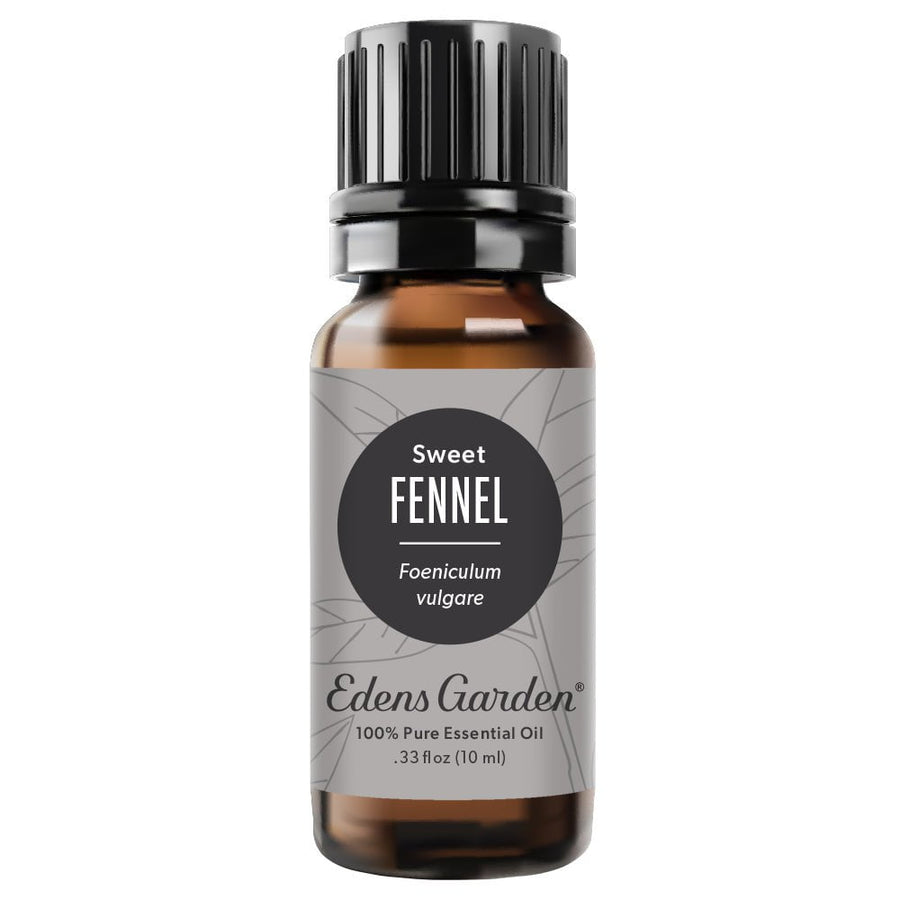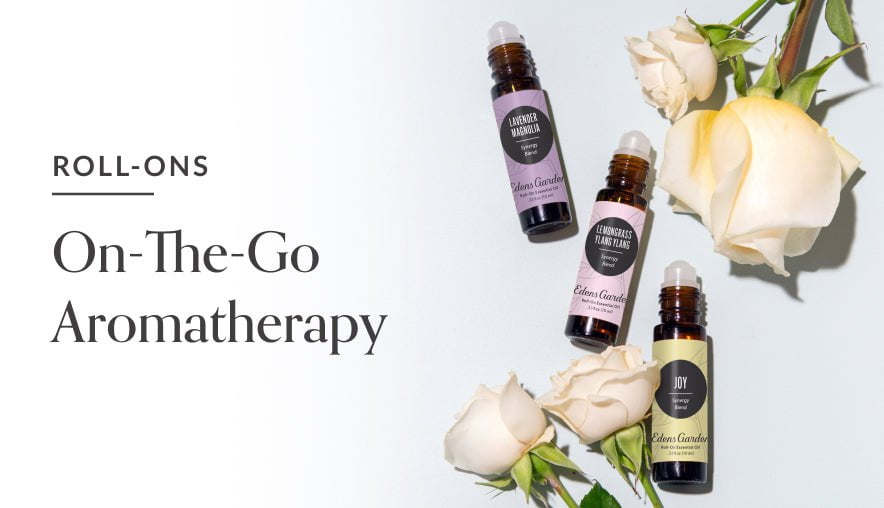Are Essential Oils Estrogenic?

When it comes to using essential oils, there are some safety guidelines to be aware of, including properly diluting your oil for topical exposure, ensuring that the oil you’re using is safe for you and those around you and that you're diffusing the oil for a safe and effective amount of time.
One safety concern that has had many aromatherapy users perplexed for over a decade is whether or not certain essential oils are estrogenic. Believe it or not, this is a heavily debated topic amongst aromatherapists, doctors and scientists alike.
In today’s guide, we will try to break down the nature of this debate and discuss whether there is any truth behind the idea that there are estrogenic essential oils.
Are Essential Oils Estrogenic?
The debate on estrogenic essential oils began in 2007 when Dr. Derek Henley released a study that concluded Lavender and Tea Tree essential oil caused prepubertal breast growth in boys. This finding came as a result of the three boys each using a product (i.e. lotion, soap, shampoo, balm) containing Lavender oil.
Henley then went on to run a series of in vitro tests on Lavender and Tea Tree oil to properly conclude whether Lavender oil was the culprit behind the patients’ breast growth. The study found that the oils were weakly estrogenic (approximately 1-2 million times weaker than estrogen). Still, the doctors concluded that Lavender and Tea Tree have enough estrogenicity to have caused prepubertal breast growth. This study has gone on to be cited numerous times as evidence of Lavender and Tea Tree’s estrogenicity.
Since then, this study has been criticized by numerous doctors and scientists who state that the conclusion does not match the results of the study, that in vitro tests are unreliable compared to in vivo tests which mimic the oil being used on people rather than isolated cells, and also that other ingredients in the products containing lavender oil were not examined or ruled out as causing breast growth.
Furthermore, aromatherapist Robert Tisserand notes that Henley et al used plastic labware in their tests which contain estrogenic chemicals known as phthalates. Essential oils are known to eat away at plastics, as was proven in a study on Frankincense essential oil and plastic labware. Therefore, Tisserand believes that there is a possibility that Lavender oil and Tea Tree oil may have mixed with estrogenic chemicals in the plastic, causing an estrogenic-like effect in Henley’s study.
A 2018 study rekindled the debate on estrogenic essential oils. The in vitro study examined the estrogenic effects of a pessary containing Geranium and Palmarosa oils and concluded that it increased estrogen levels. Still, despite the study leaning towards confirming that these oils are estrogenic, the study also states “These results suggest estrogenic action of [Palmarosa] and [Geranium] oils, although non-estrogenic actions could not be excluded.” The same study examined the effects of Lavender oil and Roman Chamomile oil and concluded that they were not estrogenic.
The results of this study were again debated as they were tested in vitro, rather than on a live human or animal and because the testing procedures were similar to Henley’s 2007 study.
Estrogenic Activity Of Lavender Essential Oil
While in vivo studies (that is, studies performed on living subjects) on the estrogenicity of essential oils are few, one study is highly regarded as evidence against the estrogenicity of Lavender oil by aromatherapists and scientists.
To examine the estrogenic activity of Lavender oil, Politano et al applied a large concentration of Lavender oil to female subjects using a skin patch that did not allow for the oil to evaporate for three consecutive days. The concentration of Lavender oil used in this study was estimated to be around 6,000 - 30,000 times greater than the average amount used topically by humans. Still, the study concluded that there were no changes in estrogen levels whatsoever.
Why The Dilution Matters
Due to the large concentration of Lavender oil used, Politano’s study would likely have proven Lavender oil can cause endocrine disruption if it was in any capacity estrogenic.
Still, one commonality in other studies on the estrogenicity of essential oils is that large concentrations are often used. A separate 2002 study showed that in extreme concentrations, essential oil constituents such as citrol, geraniol and nerol interacted with estrogen receptors at very high concentrations while eugenol showed anti-estrogenic activity in vitro. Though, it’s difficult to report these findings as significant considering that the concentrations used were much higher than how much the average human would utilize and because this study was again, not performed on a live subject.
Safety Guidelines
We believe that there is still much research to be done in the area of estrogenicity and essential oils. In the meantime, we agree with aromatherapists like Robert Tisserand who have concluded that there is not enough current evidence to support the estrogenic-activity of essential oils, with the exception of essential oils containing trans-anethole.
At Edens Garden, we currently offer two oils that contain trans-anethole which are contraindicated for those with estrogen-dependent cancers, endometriosis, young children and those that are pregnant and breastfeeding. These oils include:
If you wish to avoid essential oils such as Clary Sage oil, Lavender and Tea Tree essential oil which many believe to be non-estrogenic, we recommend avoiding these oils by all means, as we want everyone to have a safe and comfortable experience when using essential oils.
Sources:
-
Henley, Derek V., et al. “Prepubertal Gynecomastia Linked to Lavender and Tea Tree Oils.” New England Journal of Medicine, vol. 356, no. 5, 2007, pp. 479–85. Crossref, doi:10.1056/nejmoa064725.
-
Tisserand, Robert. “Concerns about Essential Oils in Puberty May Be Misplaced.” Robert Tisserand, 10 Dec. 2019, roberttisserand.com/2014/02/estrogens-in-plastic-labware.
-
Al Kharousi, Zahra S. “Initial Observation on the Interaction of Frankincense Oil with Selected Plastics.” Taylor & Francis, 6 Sept. 2013, www.tandfonline.com/doi/full/10.1080/10942912.2012.698442#.Uu7kpXnuUTs.
-
Politano, Valerie T. “SAGE Journals: Your Gateway to World-Class Research Journals.” SAGE Journals, 28 Jan. 2013, journals.sagepub.com/action/cookieAbsent.
-
Howes, M. J. “Assessment of Estrogenic Activity in Some Common Essential Oil Constituents.” PubMed, Nov. 2002, pubmed.ncbi.nlm.nih.gov/12495555.
-
Tisserand, Robert, and Rodney Young. Essential Oil Safety: A Guide for Health Care Professionals. 2nd ed., Churchill Livingstone, 2013.
Grab The Essentials Here:
Leave a comment (Comments will be approved before showing up)
4 comments
Rachel Wild
Thank you so much for this article. I have great respect for Edens Garden and Dr. Robert Pappas, and often refer to your published information for guidance. (I run a UK essential oils business called Wild As The Wind Natural Skincare & Essential Oils.) Having just watched a deeply concerning interview between a very influential UK doctor (Doc Malik) and Wendy Sellen, in which very stern claims were made about the cancer causing, oestrogenic properties of essential oils, and more specifically, the grave endocrine disrupting and carcinogenic properties of Lavender and Tea Tree essential oils, etc, I’ve, once more turned to the internet to find the best counter-evidence. In the past all I have found is a whole series of scientific papers and partially relevant info… so, I’m delighted that today I’ve been lucky enough to find your concise and conclusive overview… you have saved me the job of writing up an article myself! As Doc Malik is so influential in the UK, and perhaps even in the US (?), this interview requires a compelling response. And, as Wendy Sellen is basing her assertions on the work of Dr. Derek Henley, your article is perfect! I will be attempting to share it with Doc Malik immediately after leaving this comment. Thank you so much, once again.
Edens Garden
Hi Jeannie! Peace & Calming is most comparable to Stress Relief which you can find here: https://www.edensgarden.com/products/stress-relief
Jeannie
Does Eden’s garden have a essential oil that compares to Young livings peace& calming?











Edens Garden
January 23, 2025 at 12:33 pm
Hi Rachel! Thank you so much for your kind comment. We’re thrilled you found this article helpful and appreciate you sharing it!